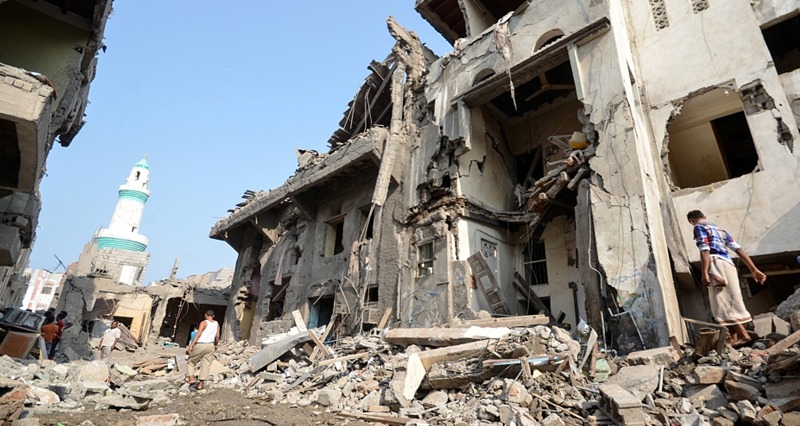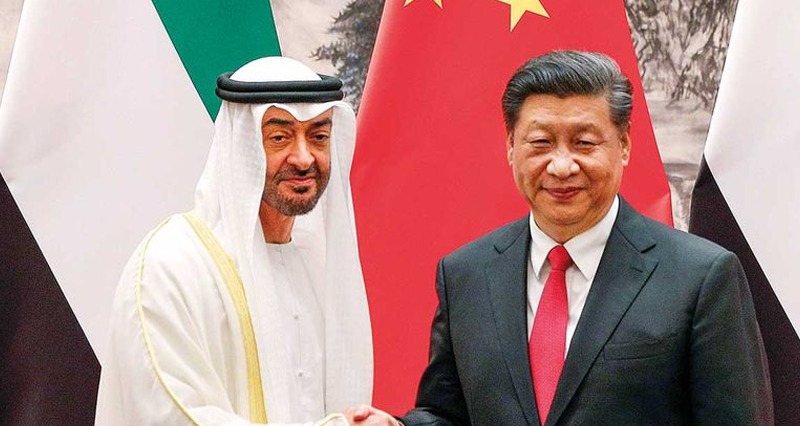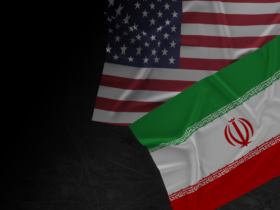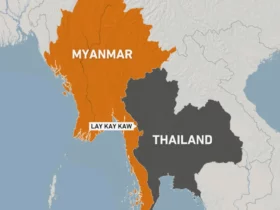Once Saudi Arabia’ key ally in Yemen war, the United Arab Emirates (UAE), has seemingly parted ways with Riyadh, leaving North Yemen and calling for the independence of South Yemen. Saudi Arabia, on the other hand, believes in Ansarullah hegemony in the north, fearing Iran’s influence will spread in the region. This has led to new friction between Riyadh and Abu Dhabi.
WHY WAS THE UAE FIGHTING IN YEMEN AND HOW?
To understand why the United Arab Emirates entered Yemen war, we need to look at the early years of the war when the current crises in the Middle East was still forming.
Western Asia includes four geopolitical regions:
Region A: From Iran to the Mediterranean Sea
Region B: States bordering the Caspian Sea
Region C: States bordering eastern Iran (e.g., Afghanistan and Pakistan)
Region D: The Arabian Peninsula and states on the southern Persian Gulf border
In the latest geostrategic competition in the 21st century, Saudi Arabia and Israel, as the regional allies of the United States, experienced failure in regions A and B and were unable to compete with Turkey and Iran, with the exception of Saudi Arabia exerting some influence in Iraq and Israel in Azerbaijan. Their influence failed to take hold in region C as well due to Pakistan’s presence. In general, it could be said that region C is controlled by Pakistan and Iran, region B is under the control of Turkey and Russia, and region A is controlled by Iran and Turkey. The only permeable but vital strategic region where Saudi Arabia was able to get a foothold was region D. Since the beginning of the Arab Spring in Yemen (Saudi Arabia’s neighbor), Riyadh decided to completely control the region in order to prevent chaos from prevailing and to counter the influence of Iran, Turkey and Pakistan.
However, Saudi Arabia has two principal rivals in its competition in region D, i.e., The Arabian Peninsula: The United Arab Emirates (UAE) and Qatar. These two countries are both very wealthy, and, unlike Riyadh, have an excellent relationship with the rest of the world. Both are looking to use their opportunities and gain better status in the Arab world.
In this context, after a period where they accompanied Saudi Arabia in various events in the Middle East, Qatar has drawn closer to Turkey and established good relations with Ankara and Tehran, Riyadh’s rivals.
The United Arab Emirates (UAE) also intended to put an end to the Saudi hegemony in the Arab world, and the war in Yemen was the best way to advance this position.
Abu Dhabi initially attempted to take control of Bab-el-Mandeb, one of the most important strategic straits in the world.
The United Arab Emirates (UAE) entered the war in Yemen with two military forces. The first included the army, 90% of which was composed of its land force and 10% of air and naval forces, including three commands in Abu Dhabi, Dubai, and Ras Al Khaimah (RAK). The structure of the UAE armed forces is very complicated, it has never been determined which of these three commands joined the Arab Coalition.
Nevertheless, the UAE’s main armed force in the war was the private military company (PMC) including African and American troops and military companies like DynCorp and ACADEMI. These military contracting companies have different objectives then the UAE’s armed forces. The armed forces were part of the Saudi-led coalition; nonetheless, the UAE-backed private mercenaries intend to occupy Yemen’s territory.
The clashes took place between the Arab Coalition and the supporters of Ali Abdullah Saleh and the Houthis on the borders between northern and southern Yemen; however, the private mercenaries fought under the UAE command in the Abyan Governorate and on the shores of Hadhramaut Governorate. These provinces are the site of the battle between Abdrabbuh Mansur Hadi’s forces and Ansar al-Sharia (i.e., the Yemeni branch of Al-Qaeda). Considering that the UAE-backed contractors did not enter into conflict with Ansar al-Sharia, it can be concluded that the UAE intends to assist the region’s independence by strengthening Ansar al-Sharia’s armed militia. The UAE navy was also present in the Taiz Governorate.
Strategically, Yemen is divided into two parts; e.g., land and islands. The Hanish group of islands, the Little Hanish and Zuqar Hanish are located in the Red Sea, while the Jabal al-Tair, Kamaran, and Perim islands, as well as The Zubair archipelago and the Socotra, Samhah, Darsah, and Abd al Kuri islands. Of these islands, the most important are Socotra and Perim.

Socotra is situated at the entrance of the Gulf of Aden. It lies some 250 kilometers (155 mi) from northeastern Somalia and 350 kilometers (217 mi) from southeastern Yemen. The Perim volcanic island, which is part of Dhubab District in the Taiz Governorate, is located at the entrance of Bab-el-Mandeb, dividing its opening into two parts, e.g., Alexander’s Strait (i.e., the Bab Iskender) and Dact-el-Mayun. Both islands play a critical role in controlling Bab-el-Mandeb. They were under British control in 1967; however, South Yemen gained control of these islands after gaining independence. In 2016, Abdrabbuh Mansur Hadi rented out Socotra isle to the UAE for 99 years. The UAE has also been extending its investment in the islet of Perim since 2008. The UAE has long craved for the domination of the two islands. After the Arab Spring shook Yemen, and the UAE felt her interests are at stake in the two islands, Abu Dhabi attempted to control Abyan province and the coast of the Yemeni province of Hadhramaut under the pretext of presence in the Arab Coalition, and to occupy the Taiz province with the support of the UAE’s naval forces in order to recapture the two strategic islands.
REASONS FOR WITHDRAWAL FROM YEMEN: STRATEGY OR RETREAT?
It should be noted that Qatar and the UAE have different goals than Saudi Arabia in the war. Qatar was accompanying Riyadh to have a share in a big victory. On the other hand, as mentioned earlier, Abu Dhabi intended to dominate Bab-el-Mandeb rather than restoring Mansur Hadi or securing the Arabian Peninsula.
With this in mind, the reasons for the UAE’s withdrawal are as follows:
The spread of war from Yemen to neighboring countries by Ansarullah. The Yemeni drone attacks on Saudi Arabia frightened the UAE because a possible Ansarullah attack on UAE territory could lead to a sharp drop in the country’s economic indicators. Moreover, entering into open conflict with a group that has repeatedly proven its ability to level successful attacks is a nightmare for the UAE.
The Abu Dhabi lobbies made a secret agreement with Ansarullah. They agreed that the UAE-backed private mercenaries would stay in southern areas of Yemen and withdraw from the northern regions and, in return, Ansarullah would not carry out any attacks on UAE territories.
The UAE and Saudi efforts to penetrate the Yemeni Al Mahrah province, which almost became the scene of a new rivalry between Riyadh and Abu Dhabi, caused chaos and insecurity. The Al Mahrah province is particularly crucial for Oman’s security because, if the province is threatened, the groundwork would be laid for the entry of terrorist groups into the country. In this respect, Muscat has held talks with the UAE to withdraw from the region.
The prolongation of the war is another factor. Nearly five years have passed since the war broke out, and it has become a war of attrition. There is no justifiable economic, military or political reason for the UAE to overspend in a war which political analysts cannot see coming to a clear end. Meanwhile, the military capabilities of the Saudi forces are inferior in the eyes of Emiratis, and the burden of war was practically on the shoulders of the UAE.
The United Arab Emirates (UAE) has recently tried to establish a military presence in Libya and Afghanistan, causing the country to raise its military expenditure.
The death of several Emirati royal families in Yemen is another significant issue that led to their withdraw, as their deaths resulted in a strong negative reaction from UAE citizens.
WHAT IMPACT WILL THE UAE’S WITHDRAWAL HAVE ON THE WAR?
The presence of several forces in the war, such as the adherents of Ali Abdullah Saleh, Ansarullah, the Houthis, the adherents of Abdrabbuh Mansur Hadi (themselves divided into proponents of Riyadh and opponents of Riyadh), the Saudi-led coalition, the Yemeni branch of Al-Qaeda and the UAE-led private mercenaries, has complicated the situation vastly. In some cases, they integrate and coalesce toward a common purpose, while other times they are openly hostile toward each other. In this sense, the war in Yemen is far more complicated than the war in Syria or Iraq.
Saudi Arabia, backed by its allies, entered into an extremely complicated battle. Now, the allies are leaving the battleground one after another, Qatar, Pakistan and now the UAE.
This will leave Riyadh unable to resist the Houthis and Ansarullah. Henceforth, we will see the rise of Ansarullah to power in northern Yemen and increasing military failures for Saudi Arabia.
POSSIBLE SCENARIOS FOR THE UNITED ARAB EMIRATES AND YEMEN
If the UAE retreats from the war, the conflict will likely not last more than a few more months. However, it should be noted that the UAE has withdrawn only from northern Yemen, not from all Yemeni territories. South Yemen is still under the control of the UAE, and Abu Dhabi will spare no effort to contribute to the independence of South Yemen.
Notwithstanding, there is only one path ahead for Saudi Arabia, i.e., Riyadh will exert all its efforts to gain victories on the battlefield. By relying on these victories and Oman’s mediation, Saudi Arabia will put an end to the Yemen war politically. By so doing, the security of the Arabian Peninsula will be maintained and Saudi Arabia would be able to keep its international prestige.
However, Yemen would have a different fate. The multi-year war has had a devastating effect on security in the country. It has been split in half and is currently under threat from Al-Qaeda operating there under the name Ansar al-Sharia. Thus, even if Saudi Arabia withdraws from Yemen, it will only result in insecurity and conflict.
SHEIKH MOHAMED BIN ZAYED MEETS CHINESE PRESIDENT XI JINPING
Following the announcement of the UAE’s withdrawal from the war and the rising crisis of oil tankers in the Persian Gulf, Abu Dhabi’s Crown Prince Sheikh Mohammed bin Zayed Al Nahyan visited China and met with Chinese President Xi Jinping to much success.
There are extensive economic ties between China and the UAE, with China being their second-largest trading partner.
The UAE plans to be China’s leading partner in the “Belt and Road Initiative” mega project. Riyadh has exerted great efforts to offer its ports to the Chinese project; however, the strategic location of the two ports of Fujairah and Jebel Ali in the UAE has afforded them the primary role.

As the Jebel Ali Port and Jebel Ali Free Zone host many Chinese companies, while the Fujairah Port makes it possible to circumvent the Strait of Hormuz, the UAE has naturally attracted the attention of those organizing the intercontinental Chinese infrastructure project. The UAE will undoubtedly establish closer relationships with China and other Asian countries.
Mohammed bin Zayed and Xi Jinping also directly pointed out that both countries are willing to cooperate in the “Belt and Road Initiative” project. The “Belt and Road Initiative” may turn China into the world’s first economic power… the UAE, on the other hand, will be able to introduce itself as the leader of the Arab world.

















Leave a Reply